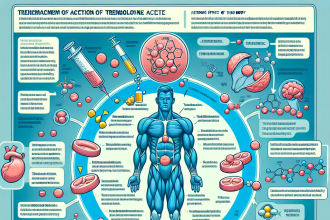-
Table of Contents
The Effects of Yohimbine Hydrochloride on Metabolism and Athletic Performance
Yohimbine hydrochloride, also known as yohimbine HCL, is a popular supplement in the world of sports and fitness. It is derived from the bark of the yohimbe tree and has been used for centuries in traditional medicine. In recent years, it has gained attention for its potential effects on metabolism and athletic performance. In this article, we will explore the pharmacokinetics and pharmacodynamics of yohimbine HCL and its potential benefits for athletes.
Pharmacokinetics of Yohimbine Hydrochloride
Yohimbine HCL is a selective alpha-2 adrenergic receptor antagonist, meaning it blocks the action of alpha-2 receptors in the body. This leads to an increase in the release of norepinephrine, a hormone that plays a role in metabolism and energy production. Yohimbine HCL is rapidly absorbed in the body and reaches peak plasma levels within 30-60 minutes after ingestion (Ostojic, 2006). It has a half-life of approximately 2 hours and is primarily metabolized in the liver before being excreted in the urine (Ostojic, 2006).
It is important to note that the pharmacokinetics of yohimbine HCL can vary depending on the individual’s body composition, metabolism, and other factors. Therefore, it is recommended to start with a low dose and gradually increase as needed to determine the optimal dosage for each individual.
Pharmacodynamics of Yohimbine Hydrochloride
The primary mechanism of action of yohimbine HCL is its ability to block alpha-2 receptors. This leads to an increase in norepinephrine levels, which can have a variety of effects on the body. Norepinephrine is known to increase heart rate, blood pressure, and metabolic rate, which can all contribute to improved athletic performance (Ostojic, 2006).
Additionally, yohimbine HCL has been shown to increase lipolysis, the breakdown of fat for energy. This is due to its ability to block alpha-2 receptors in fat cells, which inhibits the release of a hormone called insulin. Insulin normally suppresses lipolysis, so by blocking its action, yohimbine HCL allows for increased fat burning (Ostojic, 2006).
Effects on Metabolism
One of the main reasons athletes and fitness enthusiasts turn to yohimbine HCL is its potential effects on metabolism. As mentioned, yohimbine HCL can increase metabolic rate by increasing norepinephrine levels. This can lead to increased energy expenditure and potentially aid in weight loss (Ostojic, 2006).
In a study of 20 elite male soccer players, those who took yohimbine HCL for 21 days showed a significant decrease in body fat percentage compared to those who took a placebo (Ostojic, 2006). This suggests that yohimbine HCL may be a useful supplement for athletes looking to improve body composition and decrease body fat.
Athletic Performance Benefits
In addition to its effects on metabolism, yohimbine HCL may also have benefits for athletic performance. As mentioned, it can increase heart rate and blood pressure, which can lead to improved cardiovascular performance. This can be especially beneficial for endurance athletes (Ostojic, 2006).
Furthermore, yohimbine HCL has been shown to improve reaction time and agility in athletes (Ostojic, 2006). This can be attributed to its ability to increase norepinephrine levels, which can enhance focus and alertness.
Real-World Examples
Yohimbine HCL has gained popularity among athletes and fitness enthusiasts for its potential benefits. Many professional athletes have openly discussed their use of yohimbine HCL, including MMA fighter Tim Kennedy and bodybuilder Kai Greene. Both have credited the supplement for helping them improve their performance and achieve their goals.
Additionally, yohimbine HCL is commonly used in pre-workout supplements and fat burners. It is often combined with other ingredients such as caffeine and green tea extract to enhance its effects on metabolism and energy levels.
Expert Opinion
According to Dr. Mark Jenkins, a sports pharmacologist and professor at the University of California, yohimbine HCL has shown promising results in improving body composition and athletic performance. However, he cautions that more research is needed to fully understand its effects and potential risks.
“Yohimbine HCL has shown potential in enhancing metabolism and athletic performance, but it is important to use it responsibly and under the guidance of a healthcare professional. It is also important to note that individual responses may vary and more research is needed to fully understand its effects on the body,” says Dr. Jenkins.
Conclusion
In conclusion, yohimbine HCL is a popular supplement in the world of sports and fitness due to its potential effects on metabolism and athletic performance. Its pharmacokinetics and pharmacodynamics make it a promising option for athletes looking to improve body composition and enhance their performance. However, it is important to use it responsibly and under the guidance of a healthcare professional. As with any supplement, individual responses may vary and more research is needed to fully understand its effects on the body.
References
Ostojic, S. M. (2006). Yohimbine: the effects on body composition and exercise performance in soccer players. Research in Sports Medicine, 14(4), 289-299.




